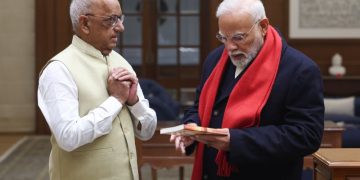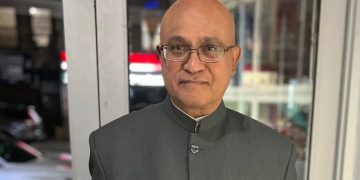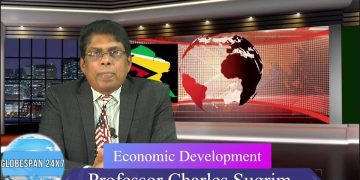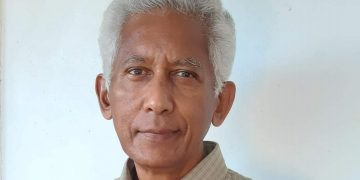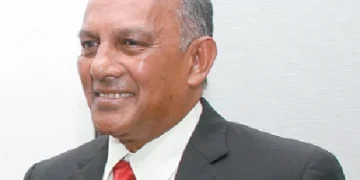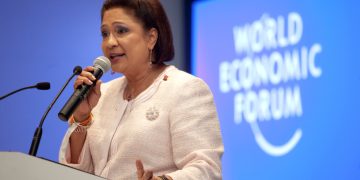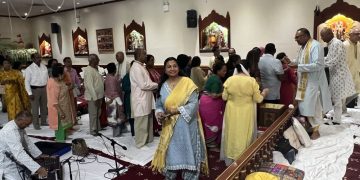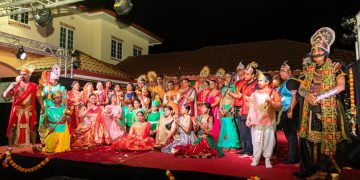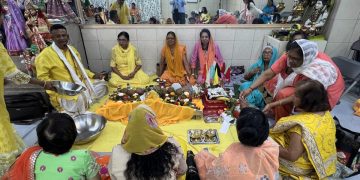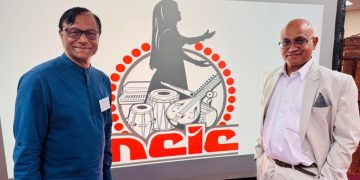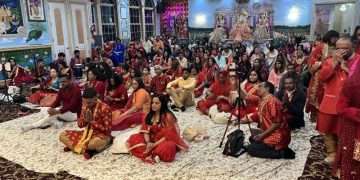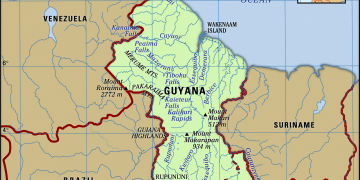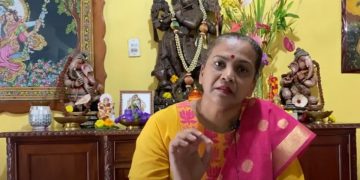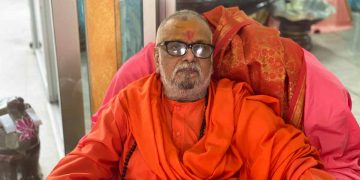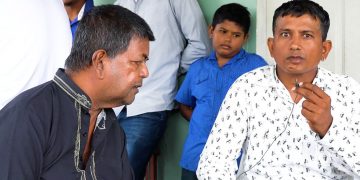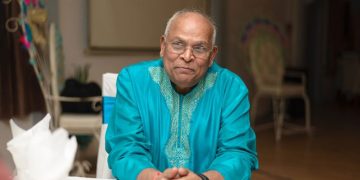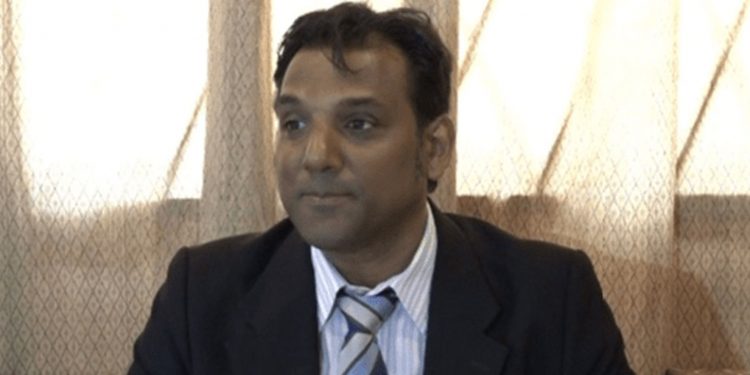WORLD INDIAN DIASPORA CONFERENCE 2020
Celebration of the Formal Abolition of Indian Indentureship (1920)
This paper will place Indian indentureship in its wider historical context as part of the historically central, long plunder of India by outside forces, and not simply an isolated, peripheral occurrence related to the end of slavery. This gives a different meaning to the presence of the girmitya diaspora in the various countries where they are found.
The Gangetic Plain – from where the vast majority of indentures came – for millennia has been at the centre of India’s empires, mythology, economy, culture, philosophy, politics, and military might. Given this background, for much of human history, many peoples have attempted – and sometimes succeeded – in taking over this vast, wealthy and globally important territory.
As so vividly brought to life in Amitav Ghosh’s Sea of Poppies trilogy, Indian indentureship is intimately tied to the opium trade and the East India Company, as impoverished Indians were essentially economic refugees, trafficked to the plantations of Mauritius, Guyana, Trinidad, Fiji, South Africa, and up and down the Caribbean in the aftermath of slavery. This human trafficking was also organized by the rapacious East India Company.
The Indian Mutiny in 1857 was against the Company – the most powerful corporation in human history, to which the description “evil” is often applied. The Mutiny ended the Company, which was a remarkable feat. Many mutineers were also sent or fled to the plantations of the British Empire in the aftermath of the conflict.
Notably, also, the end of Indian indenture in 1920 was perhaps the first major victory of Mohandas Karamchand Gandhi and the Indian nationalist movement, which eventually led to India’s freedom.
Without understanding the wider contexts in which Indian indentureship occurred and was abolished, we impoverish our understanding of the history of the peoples of Indian origin in the various plantation countries, and the role that they can still play in the shaping of world history, now that in at least four countries, they are powerful players in national – and therefore international – politics.
Perspectives on History Change Everything
How important is the history of indentureship to the Caribbean, and to world history? It is treated as a minor, peripheral event, hardly ever mentioned in global history textbooks, and not even in histories of the Caribbean. Was it really so marginal?
When one takes a Caribbean-centric view of history – as is the not-surprising case of most West Indian historians – then Indian indentureship is a relatively minor, or second-order event. The wiping out of the Amerindian populations and civilization, the establishment of the global sugar industry, the Trans-Atlantic Slave Trade, Triangular Trade and the economic development of Europe, the many European wars which saw the islands change hands numerous times, the struggle to end slavery, the establishment of the post-Emacnipation social order, the move to self-government and independence are the major points.
Indian indenture is part of the post-Emancipation story, and only of major importance in Trinidad, Guyana and Suriname. Even so, many historians have even paid slight attention to the Indian presence even in these countries, concerned as they are with the broader brush of West Indian history. There is a validity to this perspective in certain contexts, I concede.
On the other hand, from a standard Euro-centric view of world history, Indian indentureship is even less acknowledged. Being originally schooled in this mainstream tradition, I myself once understood Indian indentureship – the organised trafficking of roughly two million unfree Indian labourers around the world from 1826 to 1920 – as a minor footnote in world history. I later discovered that I was wrong.
To properly understand the importance of Indian indentureship, one has to take a much, much wider view than the Caribbean, even wider than Europe, and even longer than that of the last 500 years. From this truly global historical perspective, the importance of Indian indenture is far better appreciated and understood. In fact, we see that the story of Indian indenture is central to the unfolding of world history itself.
The Centrality of India in World Economic History
The first point to note is the centrality of India in world economic history. This is quite different from the standard Eurocentric narrative, where Europe, Rome, Egypt and even Mesopotamia and Persia are given the key historical places from ancient times to the present.
However, if we look at the entirety of global economic history – going back at least 5,000 years – India (and China) was at the centre of world economy for the entire period, right up to the 19th century AD. Quite different from the Eurocentric point of view.
Angus Maddison’s (2013) and Paul Bairoch’s (1999) quantitative studies of the world economy from 1 AD to 2030 AD statistically demonstrate India’s centrality and dominance in the world economy (along with China) for almost two millennia, right up to the 1800s.
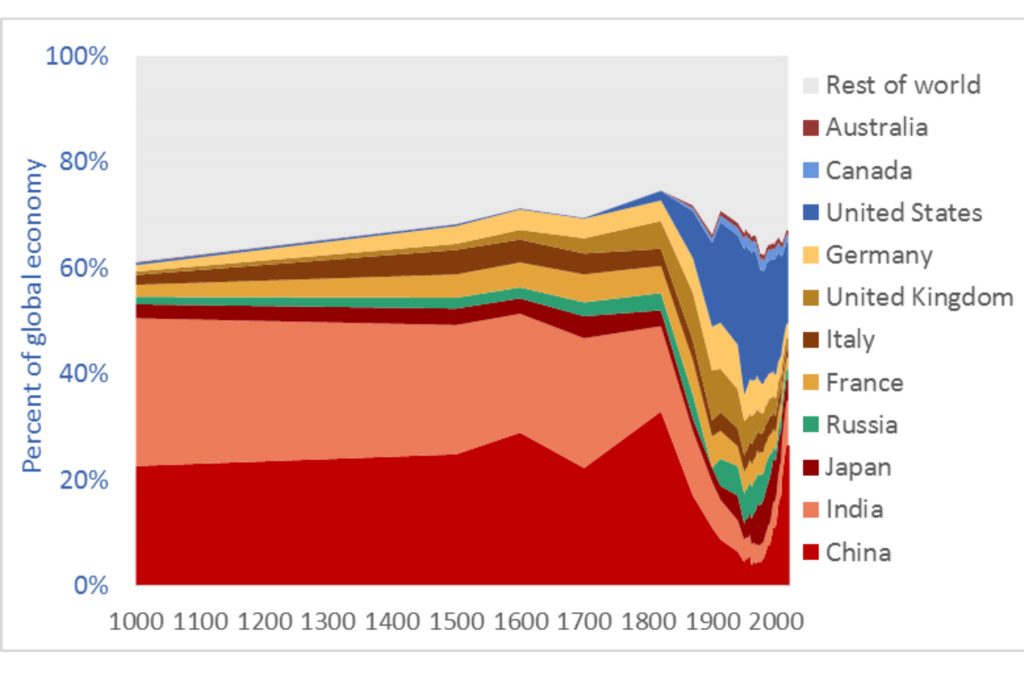
There is abundant evidence for this still existing today, in what seems like several paradoxes. India, for example, has been the largest sink of gold for thousands of years, not because it has gold mines (it has none of significance), but because of its world trade. The spice trade is well-known, though under-appreciated. Before 1725, the only place in the world where diamonds were found were in alluvial deposits in Southern India. India was also the source of many other precious stones which they produced and traded internationally. Very important, too, were India’s manufactures, from cotton and silk textiles, to steel production, to ink, jute, canvas, yarn, jute, India ink, indigo, woolens, ingots, glassware, mechanical clocks, weapons, particularly blades for Firangi swords, and an array of luxury goods.
Indeed, India was the industrial centre of the world before European imperialism and industrialisation. During medieval times, for instance, India produced 25 percent of the world’s industrial output up until the mid-18th century, prior to British rule (Clingingsmith & Williamson, 2005; Parthasarathi, 2014). As recently as the early 18th century, India had 22.6 percent share of the world’s GDP, which came down to around 16 percent by 1820, closer to its share of world population (Das, 2007).
Confirmation of India’s past wealth is still being found in the present day. For example, in 2011 there was a discovery of the fabulous treasure in the Sri Padmanabhaswamy temple at Thiruvananthapuram in Kerala (historically known as Malabar) valued at over US$15 billion. One vault is still to be opened, but the wealth at that single temple surpasses any religious centre on earth, including the Vatican.
The Hindu newspaper in India reports: “Among the treasures found was a vast store of gold coins of the Roman Empire, from almost 2,000 years ago; Venetian gold ducats of the 14th and 15th centuries when Venice was a great maritime power; Portuguese currency from its days of glory in the 16th century; 17th century coins of the Dutch East India Company; Napoleon’s gold coins from the early 19th century; and much more” (Das, 2011).
India’s dominance in world trade was common knowledge throughout history, and often complained about. For instance, “Roman senators complained that their women used too many Indian spices and luxuries, which drained the Roman Empire of precious metal. Pliny the Elder, in 77 CE, called India ‘the sink of the world’s gold!’ In the 16th century, Portugal protested that its hard-won silver from South America was being lost to India. The British Parliament echoed this lament in the 17th century and exhorted the East India Company to interest Indians in English goods… Gold thus came to our shores through trade routes, especially to the rich port cities of South India” (Das, 2011).
Indeed, the late Andre Gunder Frank (1993) has convincingly argued that the present global economic system is not just 100 years old, and not even 500 years old. It goes back 5,000 years to the international economy developed by Mohenjo-Dharo/Harrappan Civilisation in India/Bharat, Egypt, Mesopotamia and China. The economies never stopped being connected since then, connected through the Silk Road, and other ancient trade routes over sea and land. This continued over the centuries with Rome, the Mediterranean, and Northern and Western Europe, until the whole world was brought into the system after European Imperialism completed the process of (unequal) global integration.
For millennia, Europe was outside of this system (or, at best, peripheral to it), because they had nothing to offer India and China during this long period. They were merely purchasers of Oriental goods in this international trade. When Spain discovered, through Columbus, the vast gold and silver reserves in Mexico, Peru and Bolivia, it could finally enter into trade with India and China more fully. Northern and Western Europe, on the other hand, were even later arrivals to the world economy, participating directly really only since the 17th century AD. When the British first came to India, they were the poorer party.
During this long period, however, India was also the target of regular and persistent efforts to take over its wealth (“loot” is an Indian word). The important study India in Cognitive Dissonance (GGI, 2020) details how for more than 2,000 years, India was under constant attack, as others waged war the control of India and the access routes connected to it: from Alexander the Great to the many Arab, Turkic and Mongol raiders, then later the British, French and Portuguese.
The Importance of the Gangetic Plain to India, and as the source of Indentured labour
The Indian indentureship story in the Caribbean is intimately related to this history, making it far more central to world history than hitherto recognised. The vast majority of indentured Indians came from the Gangetic Plain in India. This is very significant. The Gangetic Plain for millennia has been at the centre of India’s empires, mythology, economy, culture, philosophy, politics, and military might.
It provided the capitals of the the Nanda Empire, Maurya Empire, Ashoka’s Empire, the Gupta Empire. It is the place where the Buddha received his Enlightenment, the land of the Ramayan, the places of the holiest sites in Hinduism. This area, in particular, was also a global agricultural and industrial centre in the millennia of the world economy before the European Industrial revolution.
Given this background, for much of human history, many peoples have attempted – and sometimes succeeded – in taking over this vast, wealthy and globally important territory of India/Bharat (GGI, 2020). Notably, during Muslim rule of the Gangetic Plain, the productive base was retained, as it was the basis of the wealth which was extracted (cf. Tharoor, 2018). The real point of economic transformation and degradation came with the arrival in Calcutta of the East India Company (EIC), the English (later, British) one eventually taking over administration of the area from the Mughals. (There were also the Dutch East India Company, Austrian East India Company, Danish East India Company, French East India Company, Genoese East India Company, Portuguese East India Company and Swedish East India Company, which were all later eclipsed by the British). The EIC, unlike previous rulers, completely destroyed the region’s economic base, eventually reducing India’s share of global GDP from 25 or 30 percent in the pre-British past, down to 6 percent at the time of Indian Independence (cf. Tharoor, 2018; Maddison, 2013).
The East India Company and its role in world history
The de-industrialisation and transformation of the Gangetic Plain by the EIC was crucial for indentureship. The EIC destroyed food agriculture in the region for the production of opium. This was hugely profitable for the EIC, who exported it forcibly to China (Dalrymple, 2019). They even fought wars over it, and for which the colony of Hong Kong, along with the Hong Kong-Shanghai Banking Company, which still exists today, was established.
The once wealthy area of India became a land of famines and destitution. Notably, from a Caribbean perspective, it appears that the model of the slave plantation was exported to India for tea and opium production, destroying the local economy to produce raw materials in a globally integrated product, financing and distribution chain where the vast profits were kept by international businessmen and financiers. The opium trade became central to the British Empire and the British economy itself, as sugar was in an earlier period (cf. Deming, 2011). It was the EIC, through its ruthless policies, that reversed the flow of money from East to West, as opposed the usual historical flow from West to East (and which now seems to be happening again).
The EIC became the largest and most important company in world history. People do not fully understand the significance of the fact that the English (later, British Monarch) or Government did not colonise India. It was a private company. They were the most powerful company in the history of the world, richer and more powerful than any corporation today. They bought, owned and corrupted politicians and royalty, in Europe and Asia. The funded governments. They toppled rulers. They even had their own army and naval force which were larger than that of many countries (cf. Dalrymple, 2019).
To get an historical sense of this power, at its own height, the Dutch East India Company – which was initially more powerful than the English East India Company – was richer than Apple, Facebook and Google combined (Salomons, 2017).
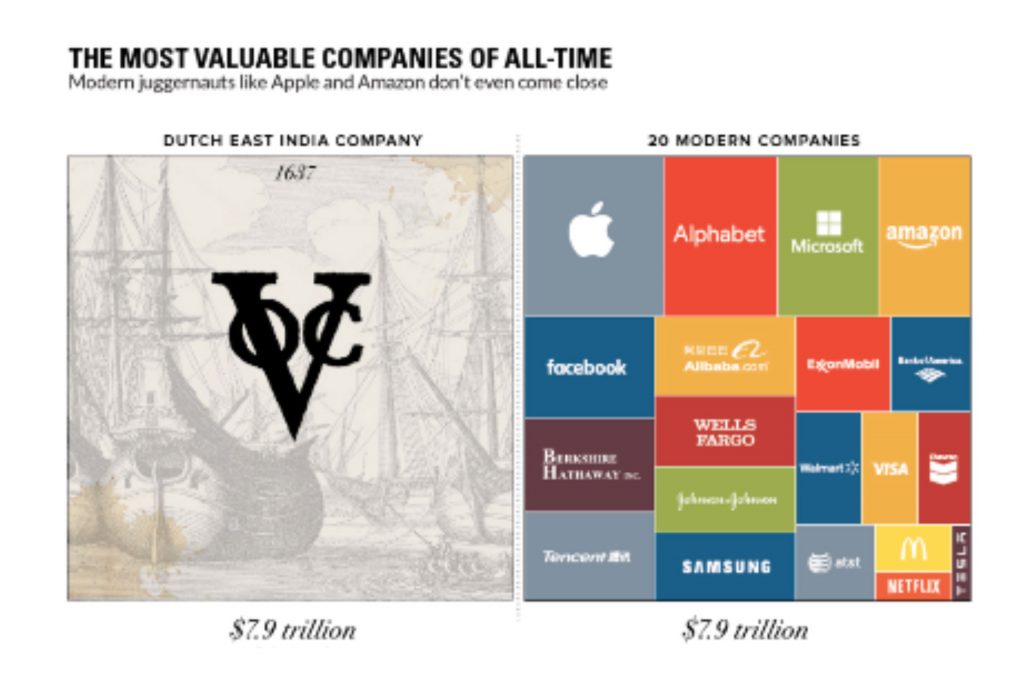
Source: Salomons, 2017
The British East India Company eventually became bigger than its Dutch counterpart. The Boston Tea Party, which began the American Revolution, was a revolt against the EIC. Indeed, the American flag was basically the EIC flag.
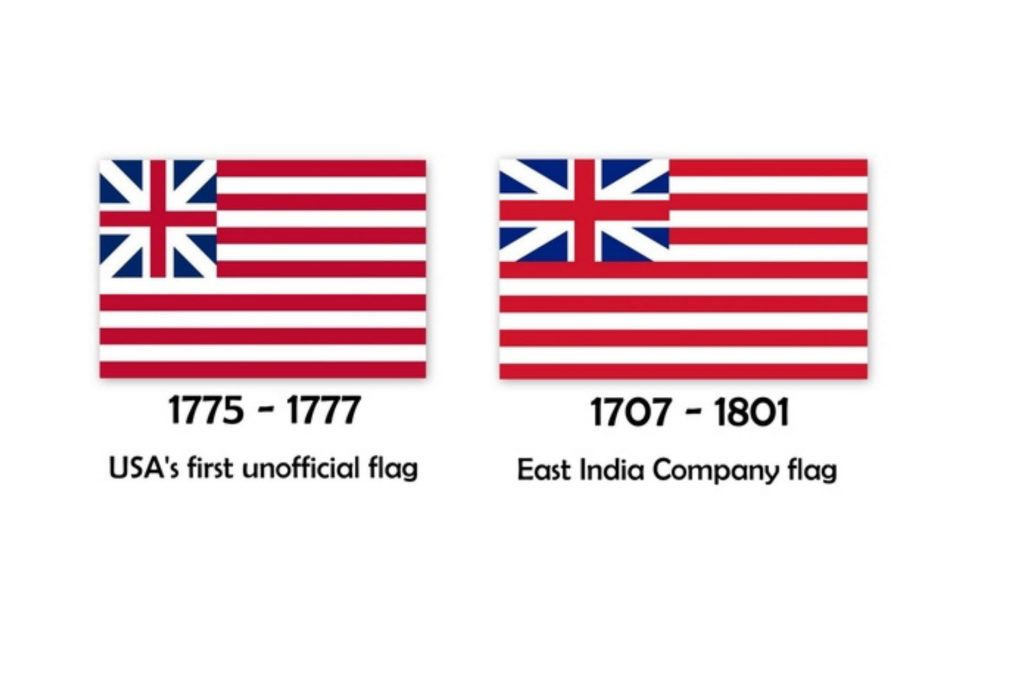
Many of the largest multinational companies to this day can trace their origins to the East India Company, as their owners with the Rothschilds, Rockerfellers, Sassoons, Rhodes, Oppenheimers, and others (GGI, 2020).
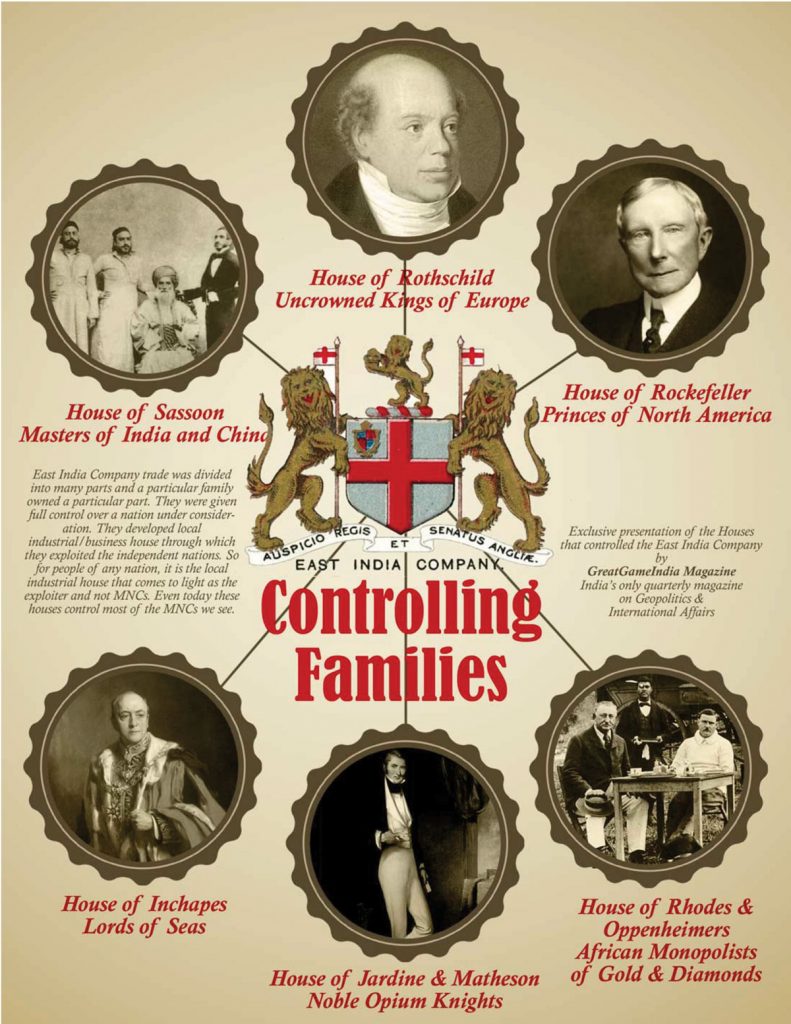
As so vividly brought to life in Amitav Ghosh’s Sea of Poppies trilogy, Indian indentureship is intimately tied to the opium trade and the EIC, as impoverished Indians were essentially economic refugees, trafficked to the plantations of Mauritius, Guyana, Trinidad, Fiji, South Africa, and up and down the Caribbean in the aftermath of slavery. This human trafficking was also organized by the rapacious EIC.
One of the most heroic tales in history is the destruction of this enormous Company by the EIC’s own army of Indian soliders in 1857. This was known as the Sepoy Mutiny, the Indian Mutiny, and the First War of Independence. This was a major event in world history. The defeat of the enormous EIC forced the British Government to directly intervene and take control of India, formally establishing the British Empire, with Queen Victoria being the Empress of India.
It took until 1859 for the British Government to take back India from the Sepoys. One of the punishments for the hundreds and thousands of soldiers who took part in the rebellion was to send them to the plantations overseas as indentured workers (Carter & Bates, 2010). Some of our ancestors are part of this epic story.
The End of Indentureship and the Nationalist movement
Indentureship’s ties to the East India Company isn’t the only link to the main current of world history. The end of indentureship was, in fact, crucial to the decolonization movement, which was one of the most important movements of the 20th century that changed the course of history and continues to do so. It marked the end of Western Imperialism and began the process of shifting Western dominance in the world, a process which is still going on today, unevenly but seemingly inevitably.
The involvement of indentureship in this grand historical movement happened directly through Mohandas Karamchand Gandhi, who began his political activism in South Africa, where roughly 200,000 indentured labourers were sent. Gandhi’s activism, perhaps single-handedly, put the question of Indian indenture at the forefront of the Indian nationalist movement (cf. Vahed, 2019). It became central to the struggle for pride, dignity and freedom. The official abolition of indentureship in 1920, which we are marking today, was one of the first major successes of the Indian nationalist movement. This led to the freedom of India from British rule, and later the decolonisation of the vast majority of the colonial world.
Conclusion
It can be seen, then, that the story of Indian indenture is crucial to the history of both Imperialism and decolonisation. Far from being a minor event in world history, therefore, indentureship is a crucial part of it. Without understanding the wider contexts in which Indian indentureship occurred and was abolished, we impoverish our understanding of the history of the peoples of Indian origin in the various plantation countries, and the role that they can still play in the shaping of world history, now that in at least four countries, they are powerful players in national – and therefore international – politics.
REFERENCES
Bairoch, P. (1999). Economics and world history: Myths and paradoxes. Chicago [Ill.: University of Chicago Press.
Carter, M & Bates, C (2010), ‘Empire and locality: a global dimension to the 1857 Indian Uprising’, Journal of Global History, vol. 5, no. 1, pp. 51-73.
Clingingsmith, D., & Williamson, J. G. (2005). India’s industrialization under british rule: new ideas, new evidence. London: CEPR.
Dalrymple, W. (2019). The Anarchy: The East India Company, Corporate Violence, And The Pillage Of An Empire. London: Bloomsbury Publishing.
Das, G. (2007). “India: How a rich nation became poor and will be rich again.” Gurcharan Das: Author, Commentator, Public Intellectual, 19 March. http://gurcharandas.org/rich-nation-poor
Das, G. (2011). “All the world’s gold,” The Hindu, 27 August. https://www.thehindu.com/features/magazine/all-the-worlds-gold/article2395912.ece
Deming, S. (2011). The Economic Importance Of Indian Opium And Trade With
China On Britain’s Economy, 1843-1890. Whitman College Economics Working Papers No. 25 https://www.whitman.edu/economics/Workingpapers/content/WP_25.pdf
GGI. Editors of Great Game India. (2020). India in Cognitive Dissonance. Chennai: Notion Press.
Frank, A. G. (1993). The world system: 500 or 5000 years?. London: Routledge.
Maddison, A. (2013). Contours of the world economy, 1-2030 AD: Essays in macro-economic history. Oxford: Oxford Univ. Press
Parthasarathi, P. (2014). Why Europe grew rich and Asia did not: Global economic divergence, 1600-1850. Cambridge: Cambridge University Press.
Salomons, B. (2017). “The Dutch East India Company was richer than Apple,
Google and Facebook combined,” Dutch Review, 15 December. https://dutchreview.com/culture/history/how-rich-was-the-dutch-east-india-company/
Tharoor, S. (2018). Inglorious empire: What the British did to India. London: Scribe Publication.
Vahed, G. (2019). ‘An evil thing’: Gandhi and Indian Indentured Labour in South Africa, 1893-1914. South Asia, 42, 4, 654-674.















